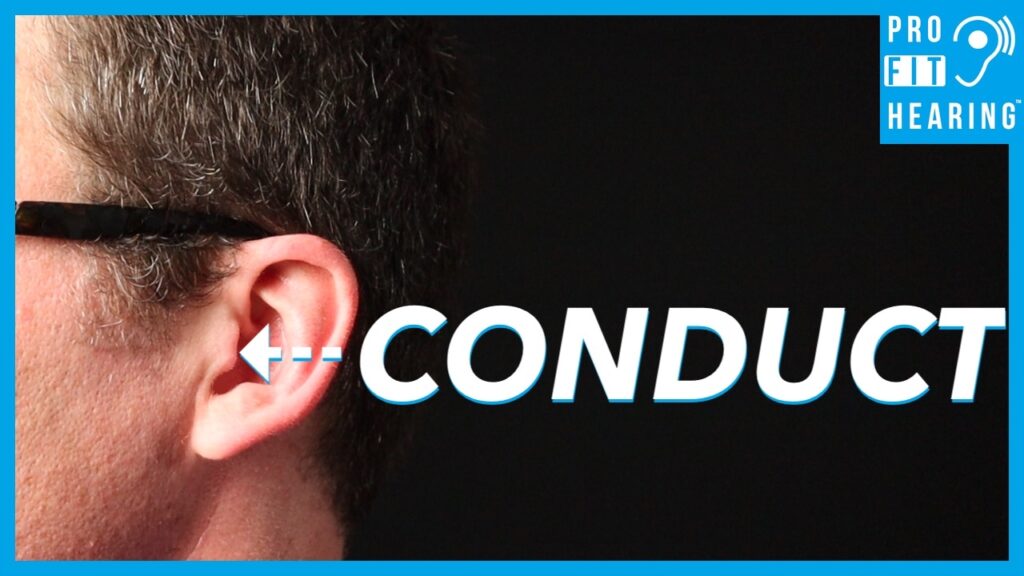Conductive Hearing Loss and the Middle Ear

Conductive Hearing Loss
Do you know someone with conductive hearing loss? Well, in this post I’m talking about conductive hearing loss, the middle ear, and the smallest bone in the body. Coming Up!
Please SUBSCRIBE to our YouTube channel for weekly videos! The video link is at the end of this post.
Hi, I’m Dr. Derek audiologist with ProFitHearing.com bringing you the best insight in today’s latest hearing aids and audio technology to improve your life. If you have concerns about your hearing, always consult with your local physician or audiologist.
Welcome to Question of the Day, Friday where I answer your hearing healthcare and audio technology question.
What is conductive hearing loss? Today, I’m talking about conductive hearing loss, the middle ear, and the smallest bone in the body.
Parts of the ear
There are three parts of the ear: external, middle, and inner.
There are also three types of hearing loss: conductive, sensorineural, and mixed.
The external ear is also called the pinna or auricle. It’s the part of the ear that everyone can see. The purpose of the external ear is to collect all the sounds in your environment, to shape the sound for better speech understanding and communication, and to direct the sound into the ear canal to the eardrum (or tympanic membrane). Incoming sound makes the eardrum vibrate which passes sound energy into the middle ear.
Inside the middle ear, the eardrum and the three smallest bones in the body vibrate in response to sound. These bones are called the malleus, incus, and stapes commonly referred to as the hammer, anvil, and stirrup. The stapes (or stirrup) is the smallest of the three bones, and it is also the smallest bone in the body. These vibrating ear bones transfer sound energy directly into the inner ear where our hearing sensory cells and auditory nerve are located. The middle ear is also filled with air which is regulated by the eustachian tube that goes to the back of your throat.
Conductive Hearing Loss
Ok, so up to this point I’ve discussed how the ear works normally, but what happens when you have conductive hearing loss?
Some of the most common causes of conductive hearing loss include: earwax build-up (also known as cerumen build-up), fluid in the middle ear due to an ear infection, abnormal function of the ear bones (where they can not vibrate normally), or an eardrum perforation (or hole in the eardrum). There may also be congenital causes of conductive hearing loss such as microtia (an underdeveloped external ear) and atresia (a narrow ear canal or absence of ear canal).
If you have concerns about your hearing, have your audiologist evaluate your hearing first. If a conductive hearing loss is detected, a referral to an Ear Nose and Throat physician (ENT doctor) is recommended. The best treatment plan can then be determined. If no medical or surgical treatment is recommended, your ENT doctor can decide whether to provide medical clearance for hearing aids.
Question of the Day
So for today’s question, what one thing did you learn about hearing loss or the ear that surprised you the most? What other video topics do you want to see? Let’s connect in the comments.
Remember to connect with Pro Fit Hearing on social media. Be a part of the Pro Fit Hearing community!
If you’re interested in hearing aids, click HERE for my free ebook “How to Buy Hearing Aids.” Know what to ask your audiologist or hearing aid dispenser so that your hearing aids are easy to use and have all the features you’re looking for.
Remember, Pro Fit Hearing brings you the best insight in today’s latest hearing aids and audio technology to improve your life. If you have concerns about your hearing, always consult with your local physician or audiologist.
-Dr. Derek
